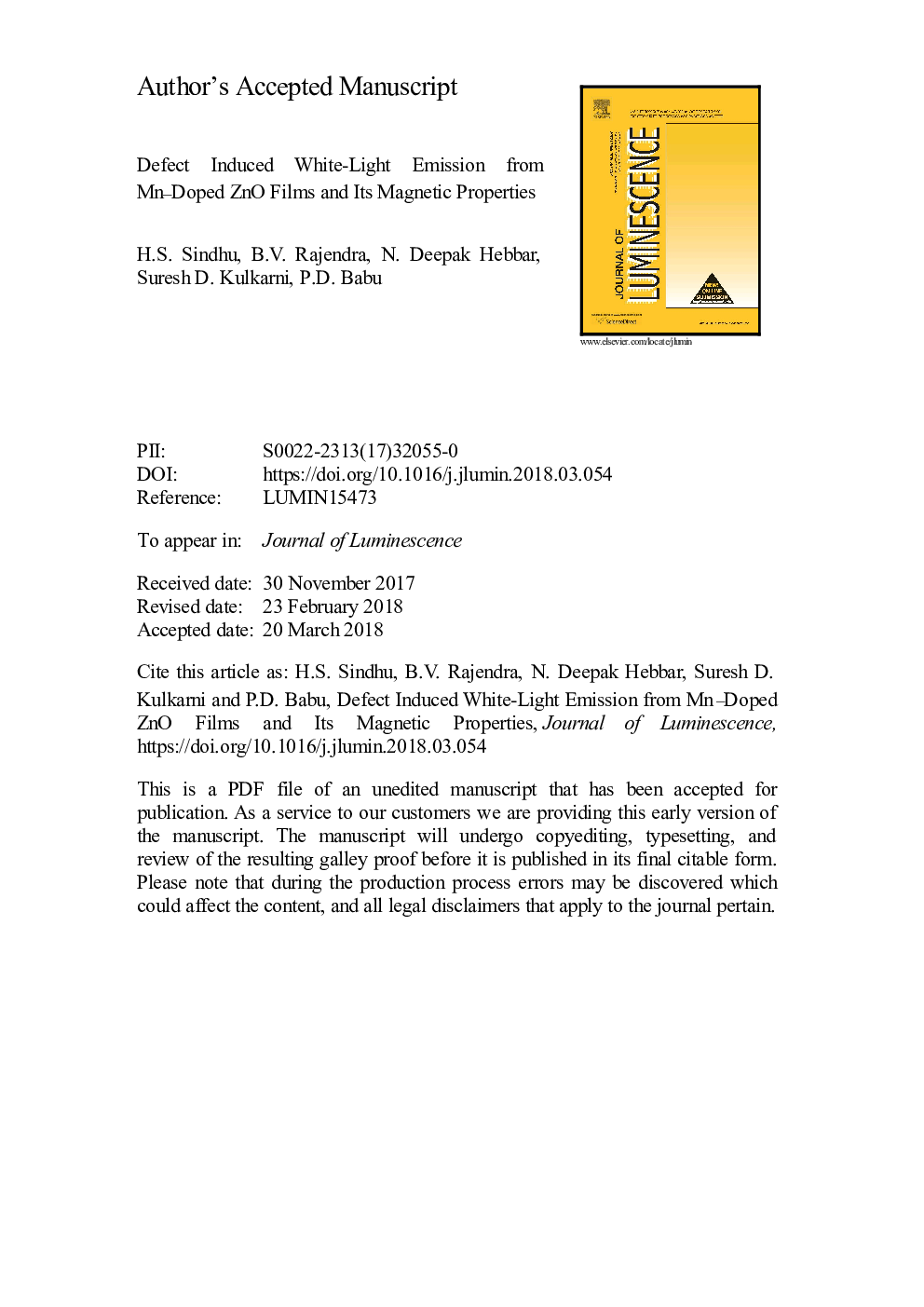| Article ID | Journal | Published Year | Pages | File Type |
|---|---|---|---|---|
| 7840201 | Journal of Luminescence | 2018 | 27 Pages |
Abstract
Thin films of Zn1-xMnxO (where xâ¯=â¯0.01-0.1), a transparent dilute magnetic semiconductor were grown on a glass substrate using cost-effective chemical spray pyrolysis. All films were polycrystalline and most intense XRD peak changed from (0 0 2) at lower x values to (1 0 0) plane for higher doping level. The deposits possessed the fibrous structure up to xâ¯=â¯0.04, a flowered structure for xâ¯=â¯0.05-0.07, and spheroid structure for xâ¯=â¯0.08-0.10, as revealed by SEM. The visible region, optical transmittance systematically changed from 90% to 55%, with increasing dopant concentration. The optical energy band-gap decreased at higher doping levels attributed to the sp-d exchange interactions. The photoluminescence (PL) spectroscopy revealed the presence of various defects which pronounced with increasing Mn%. As a result of multiple defect induced transitions, the PL spectra spanned the entire visible spectrum. Zn.95Mn.05O films showed CIE values with xâ¯=â¯0.333 and yâ¯=â¯0.322, perfectly matching to that of pure white light, with a “Colour Temperature” of 5475â¯K. The magnetic measurements confirm that the higher Mn-doped films displayed room-temperature ferromagnetism while less doped films showed weak ferromagnetic effects at 5â¯K.
Related Topics
Physical Sciences and Engineering
Chemistry
Physical and Theoretical Chemistry
Authors
H.S. Sindhu, B.V. Rajendra, N. Deepak Hebbar, Suresh D. Kulkarni, P.D. Babu,
